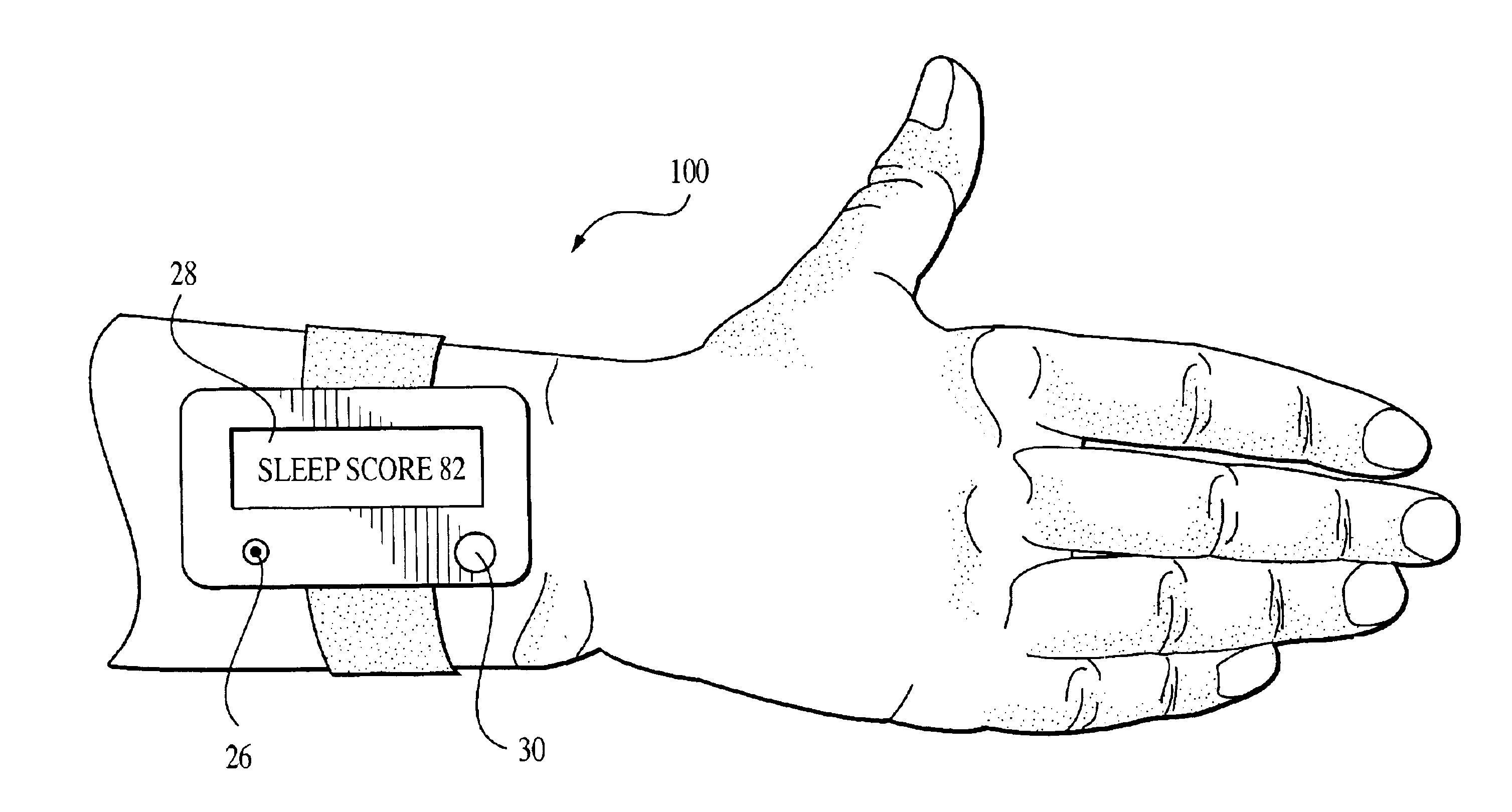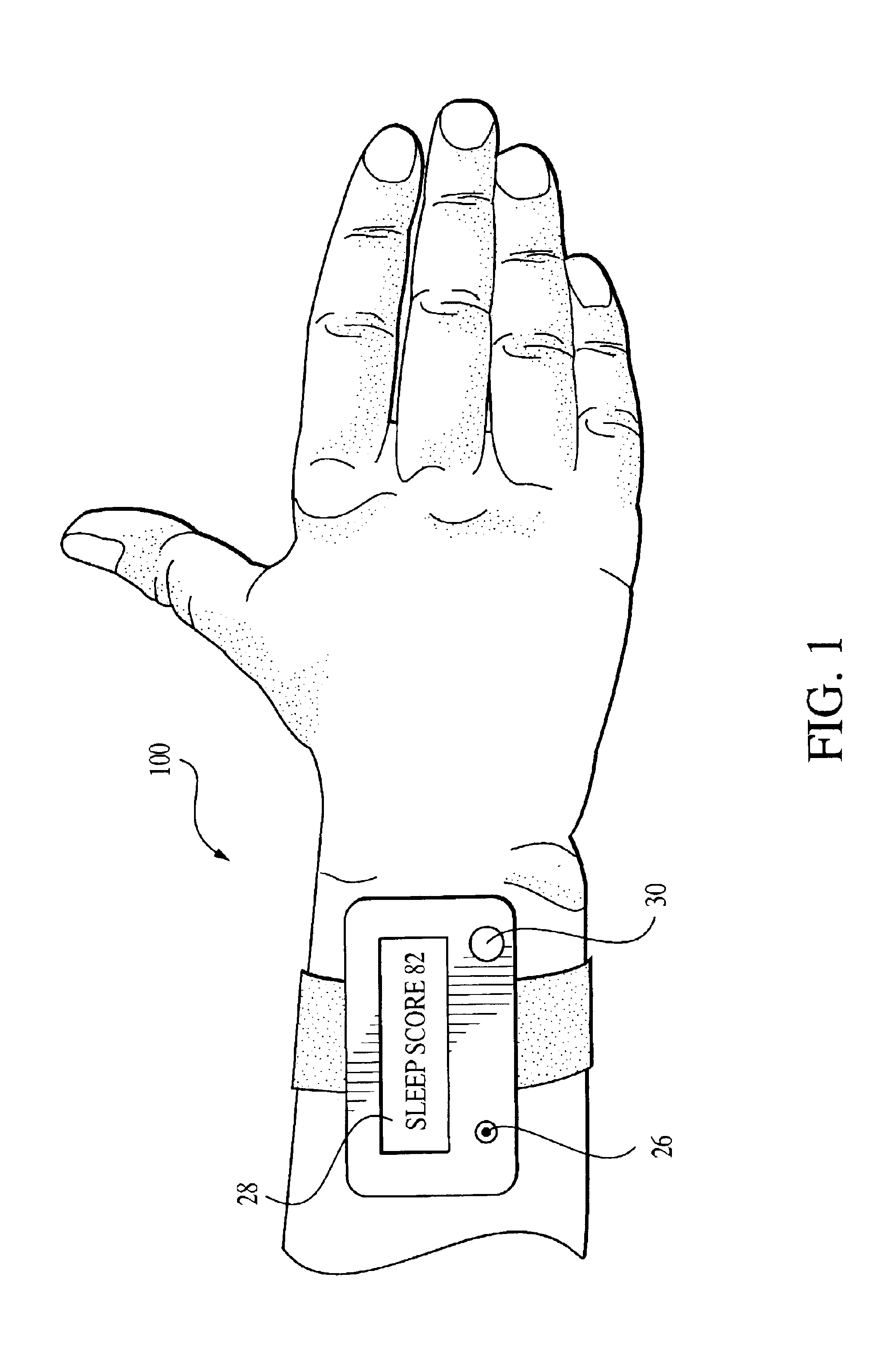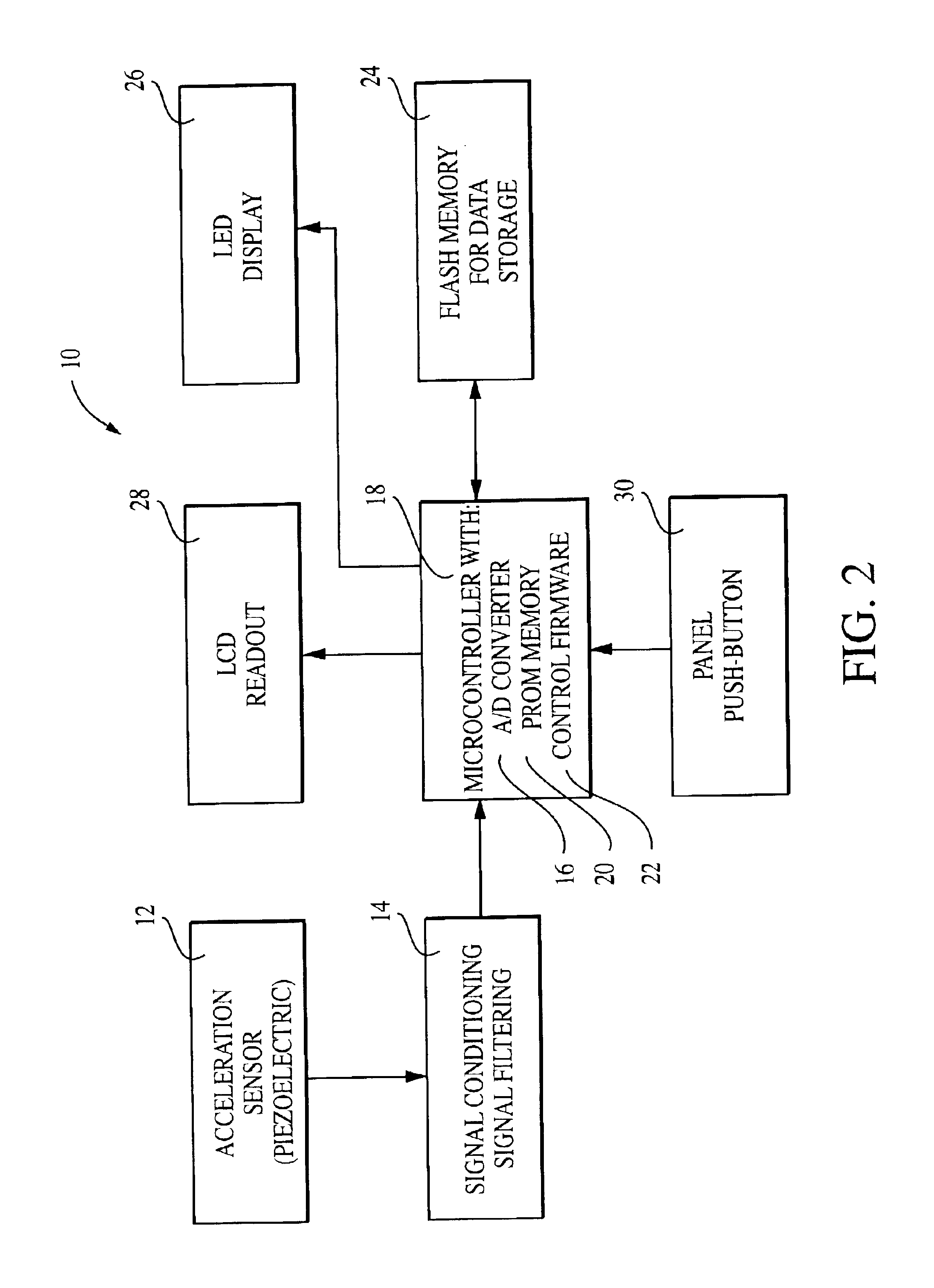Sleep scoring apparatus and method
a scoring apparatus and a technology for sleeping, applied in the field of sleeping scoring apparatus and methods, can solve the problems of reducing the tolerance of frustration, affecting the accuracy of sleep deprivation, so as to achieve reasonable accuracy, compact and convenient use
- Summary
- Abstract
- Description
- Claims
- Application Information
AI Technical Summary
Benefits of technology
Problems solved by technology
Method used
Image
Examples
Embodiment Construction
Sleep research studies (e.g., by Gorny, Allen, Krausman, et al., Sleep Research, 1997; Gorny and Allen, Sleep, 1999; Verbeek, et al., Perceptual Motor Skills, 2001) have shown that fewer arm movements during sleep relate to more restful sleep, while excessive movements are associated with restless or poorer sleep.
The present invention therefore uses this finding to develop a sleep meter or sleep monitoring apparatus. It operates by monitoring by acceleration methods a person's arm movements to yield a sleep score for the person's sleep behavior during the monitored period.
In a preferred embodiment, the present invention takes the form of a sleep meter 10 that is worn on the wrist. Using digital sampling techniques, it measures the intensity and duration of arm movements. The value it measures is then scaled and visually presented to the user as a sleep score ranging from 0 to 100. See FIG. 1, wherein like reference numerals designate like elements throughout all the drawings.
A schem...
PUM
 Login to View More
Login to View More Abstract
Description
Claims
Application Information
 Login to View More
Login to View More - R&D
- Intellectual Property
- Life Sciences
- Materials
- Tech Scout
- Unparalleled Data Quality
- Higher Quality Content
- 60% Fewer Hallucinations
Browse by: Latest US Patents, China's latest patents, Technical Efficacy Thesaurus, Application Domain, Technology Topic, Popular Technical Reports.
© 2025 PatSnap. All rights reserved.Legal|Privacy policy|Modern Slavery Act Transparency Statement|Sitemap|About US| Contact US: help@patsnap.com



